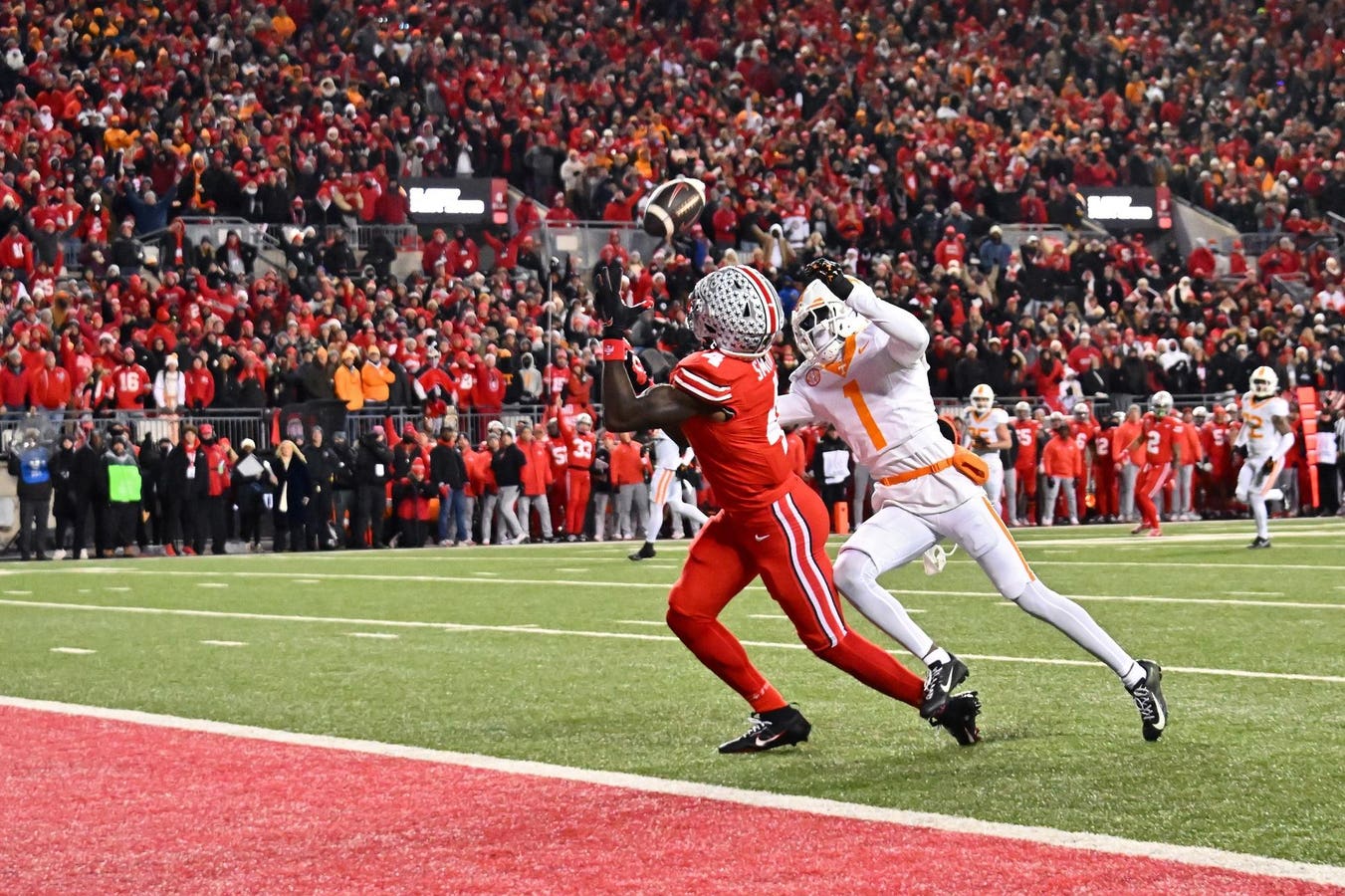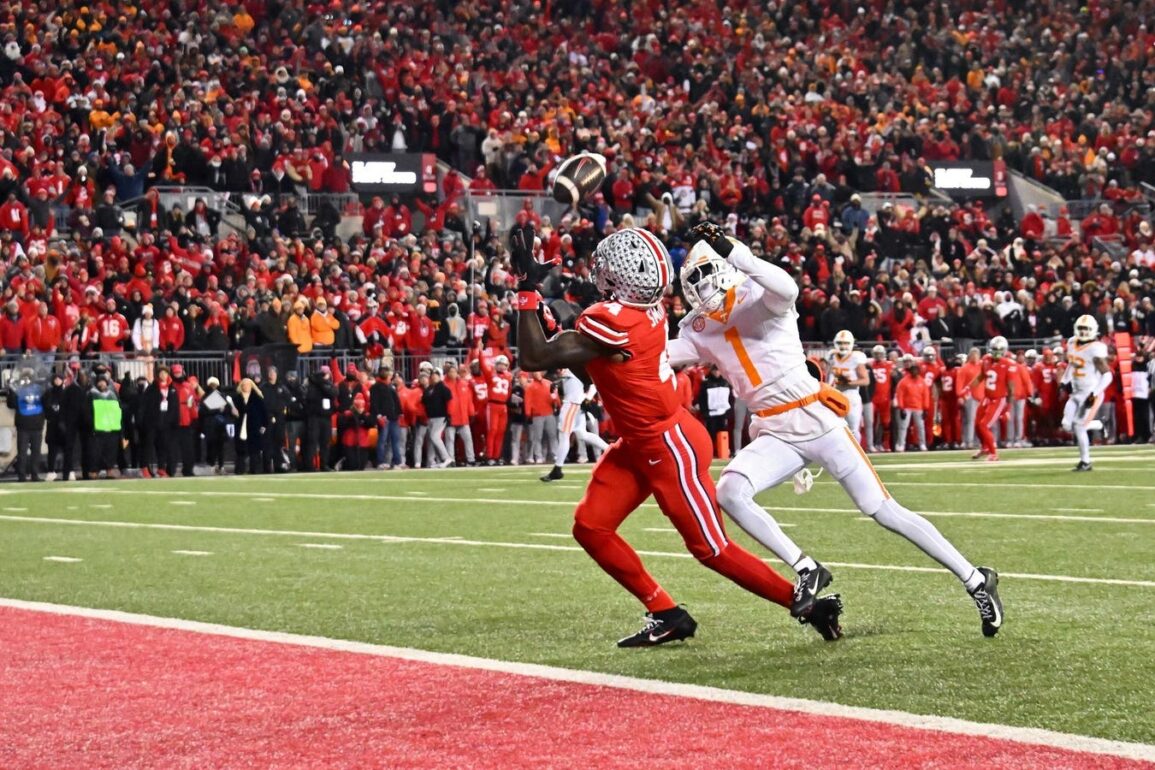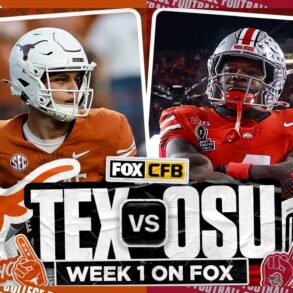
It didn’t take long for the expanded, 12-team College Football Playoff to start tweaking its format – with more adjustments likely to come.
After one season of granting first-round byes to the top four conference champions, the College Football Playoff announced last week that it would move to a straight seeding model, issuing byes to the top four teams whether they won their respective conference titles or not.
Last year, the top four seeds would’ve been Oregon, Georgia, Texas and Penn State under that format. However, the 2024 emphasis on conference titles meant that byes were granted to Oregon (Big Ten champion), Georgia (SEC champion), Boise State (Mountain West champion) and Arizona State (Big 12 champion) instead. In an era where multiple conferences have 16 or more members, the quick shift could be seen as a sensible one.
But what comes next may not be so grounded in competitive necessity, as it is in possible TV revenues and the whims of college football’s most powerful players, the SEC and Big Ten, who currently seem dead-set on a 16-team field now.
4+4+2+2+1 (+3) Model vs. 5+11 Model
For the Big Ten, the preferred setup seems to be a 16-team event where the SEC and Big Ten each get four guaranteed participants. The ACC and Big 12 would receive two bids apiece in that format and then the top-ranked champion from the other FBS conferences would receive one bid. Another three at-large bids would be given out to the three best remaining teams by College Football Playoff ranking.
The SEC, on the other hand, seems more in favor of a simpler “5+11” model – where automatic bids are granted to the five best conference champions by ranking, followed by 11 at-large bids, regardless of conference affiliation.
That idea, which largely just admits the top 16 teams into the playoff field, doesn’t have uniform support in the SEC, though. ESPN’s reporting showed that while SEC commissioner Greg Sankey and member coaches like Lane Kiffin (Mississippi) and Kirby Smart (Georgia) were in favor of that setup, athletic directors at Florida and Texas A&M preferred automatic spots.
Would one model be more beneficial than another, though? It depends on which conference you’re talking about.
Who Wins In 4+4+2+2+1 (+3) Format?
Using College Football Playoff rankings from 2017-2024 and applying current conference affiliations, there are limited differences between the two formats year-to-year. But, even a net difference of a team or two could mean $4-8 million more (or fewer) dollars for a league.
The SEC would’ve lost three teams under this format (including one for each of the last two years), while gaining two, for a net loss of one participant when compared to the 5+11 format.
Meanwhile, the Big Ten, the biggest proponent of the 4+4+2+2+1 selection process, would’ve actually lost two participants over the course of these eight years, while gaining zero.
The big winner in this alignment is actually the ACC, which picks up a net of three teams vs. the 5+11 format, while losing zero (though none since 2021, when No. 17 Wake Forest would’ve “stolen” a spot).
PASADENA, CA – JANUARY 01: Alabama Crimson Tide running back Jase McClellan (2) runs for a 34-yard … More
What About the 5+11 Setup?
Since the SEC loses a team under the 4+4+2+2+1 format, it comparatively gains one in the 5+11 format – which speaks to the point Sankey seems to be making to ESPN when he mentioned the conference’s “ability to earn those berths” earlier this week. The 5+11 alignment’s straightforward nature means the only bid “steals” come via conference champs ranked outside of the top 16.
The Big Ten’s actually the biggest winner in this setup, gaining two participants (Oregon in 2022 and Iowa in 2021). Which makes it even more confusing why the conference would be against that setup.
In fact, dating back to 2017, the Big Ten is the only conference that would’ve had at least four teams per year – again, using current affiliations. So while the automatic bid protects against a down year for the conference, it also has a higher propensity to penalize the SEC or Big Ten in the case of a down year by another league.
The confusion on the Big Ten’s stance grows when looking at its ideas around a play-in round between the No. 3 through No. 6 teams to earn the final two automatic spots. Theoretically, if the No. 5 and No. 6 score upsets in those games, the 4+4+2+2+1 format could actually wind up leaving out “better” teams.
Of course, the other side of that coin is TV revenue.
So perhaps the conference and its media partners see more games with perceived stakes as the better option. But does the on-field product really benefit from a four-loss No. 6 team in the Big Ten making the playoff? Unfortunately, the answer to that question may not matter much anymore.
This post was originally published on this site be sure to check out more of their content.








